May 30, 2023
This story was originally published by St. Stephens Indian Mission Foundation in VOL. XIX JUL/AUG/SEPT 1989 NO. 3. St. Stephens Indian Mission Foundation owns the copyright, and the story is reprinted here with permission from the Foundation. More information on the Foundation can be found following the story or by clicking on the link above.
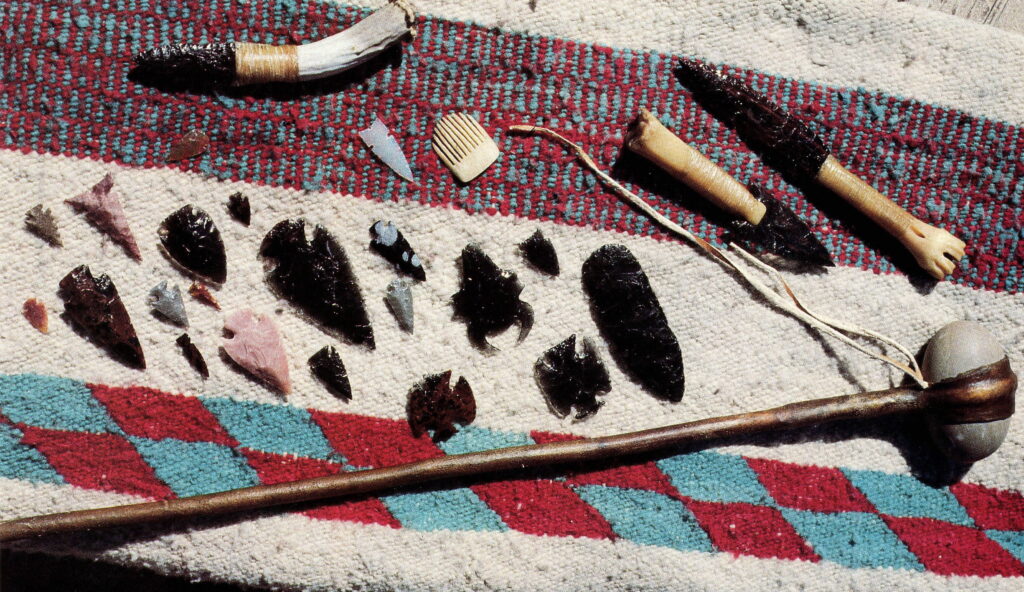
To the average person, an old Indian made arrowhead or projectile is seen as just an artifact. Although making such items from stone was routine for early Native Americans, they are usually very well designed pieces of art. These ancient craftsmen are truly deserving of praise when one considers that centuries later their work is valued as artistry.
Early Indian cultures did not make points and blades as a way of passing time. There was a specific function in mind as the stone was chipped away by the craftsman. Chipped points helped secure game and various types of blades were used for butchering and processing animals. These early artisans were concerned with not only obtaining food, but also procuring skins and furs for clothing, as well as bone and antler for tools.
Early Native Americans utilized whatever stone was available and workable in their immediate vicinity. Trading was done between tribes for stone that was not found in their locale. Therefore, it was not unusual to find a pile of chips that contain a number of different colors and types of stone which are not natural to that spot.
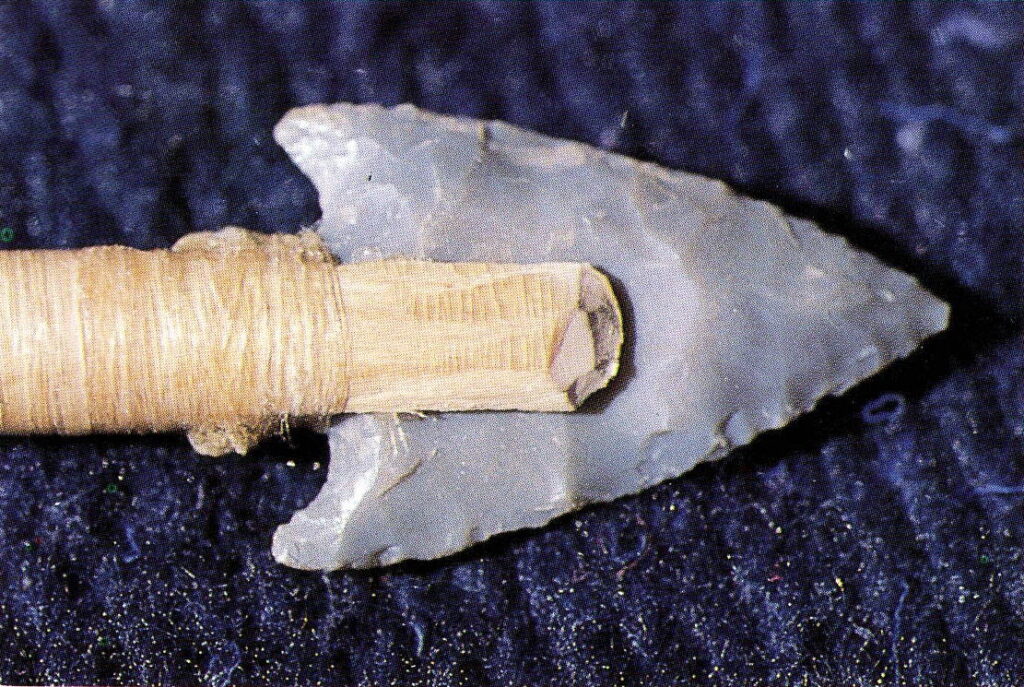
No two stones chip the same way, even if they are the same type stone. Factors of size, material and chipping technique determine the shape of the point. Points are for piercing and were sharpened to different degrees. Blades were designed for cutting and scraping. Beveling gave a stronger edge to a blade and is a result of chipping from one side only. An edge that has been serrated was ideal for skinning hides and furs. Points and blades could be cleaned and rechipped after repeated use to be in good condition for the next time they were needed. If a point broke the craftsman could fashion a new one from stone chips he had saved previously and were a part of his possessions. Early Indians realized the stress limit of their points and blades and tried not to abuse the principal characteristics.
A large range of styles, shapes and sizes of tools, weaponry and ceremonial objects were chipped by these early craftsmen. Apparently, this art of chipping was widespread in view of the fact that various items with a common appearance have been found at different geographic regions. Archeologists explain these similarities by the parallel development concept: “Primitive man by his own ingenuity and innovation will independently develop the same work skills and tools in much the same way and sequence regardless of his location.”
Not every stone can be easily worked. Most stone must be tempered before it is chipped. Early Native Americans may have done their tempering by digging a pit, placing stone into it and then covering the stone with a small amount of earth. On top of this dirt mound they built a small fire. The skill in this preparatory stage was in knowing how hot to make the fire and how long it needed to be maintained.
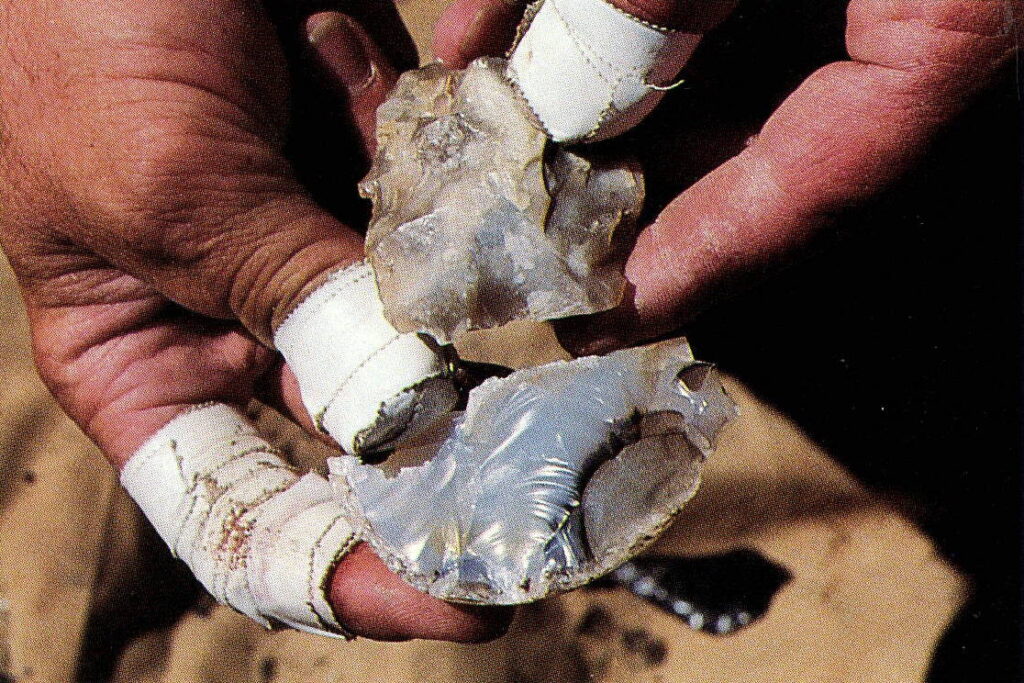
Obsidian is tempered naturally in its formation and can be worked without further preparation. This stone was highly favored and it is believed that Indians in the Wind River area traded obsidian among themselves and with neighboring tribes who had also ventured into what is now Yellowstone Park. A mountain of obsidian within the Yellowstone country was quarried during the Stone Age and continued to be excavated for centuries.
Many unusual and fascinating cutting instruments and personal tools were made by these craftsmen for certain tasks. It seems likely that these energetic people were involved with interdependence within their industrious way of life. For example, one member who had a special talent for chipping arrowheads may have traded with someone whose ability was in making exceptional arrows. But there is little doubt that each hunter did possess basic knowledge which enabled him to build his own equipment if the need arose.
The lifestyle and appearance of western artist, Tom Lucas has not been affected by today’s fast paced world. The log home of Tom and his wife, Betty is located between Fort Washakie and the base of the Wind River Mountains. Their home is a combination of residence, museum and art gallery.
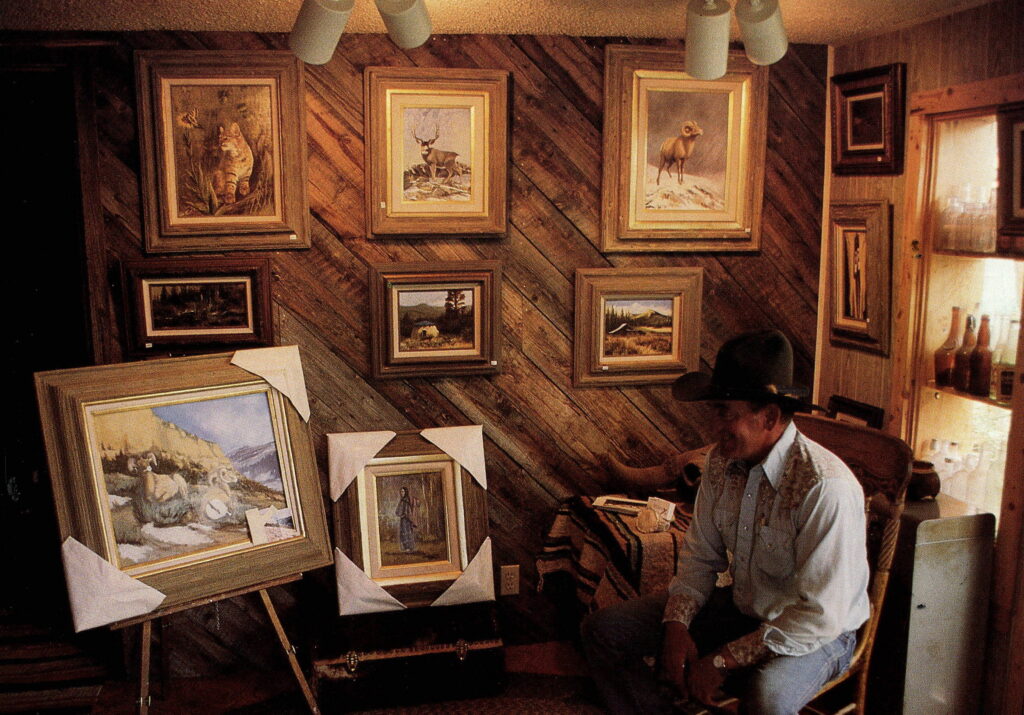
Tom has been painting the people, scenery and wildlife of the Wind River Reservation for the past twenty years. Visitors, interested in viewing his paintings at the gallery, soon realize that Tom has developed additional skills to perfection. Articles made of rawhide, leather, antlers, horns and stone are displayed in a showcase along with beautiful beadwork made by Betty.
Tom is quite familiar with the skill of chipping stone and much of his knowledge has been self-taught. While roaming the countryside during his childhood, Tom found various stone chippings and colorful piles of stone flakes. His curiosity called for a deeper understanding of not only who these skilled people were, but how these items were made and in what manner they were used.
Tom is quick to emphasize that he does not make artifacts. He simply creates points and tools utilizing the same techniques and materials used by early Indians. As with any craftsman, Tom has a variety of tools — several different sized rocks, half-a-dozen antler tips honed to different degrees and a flat sandstone used to sharpen his tools.
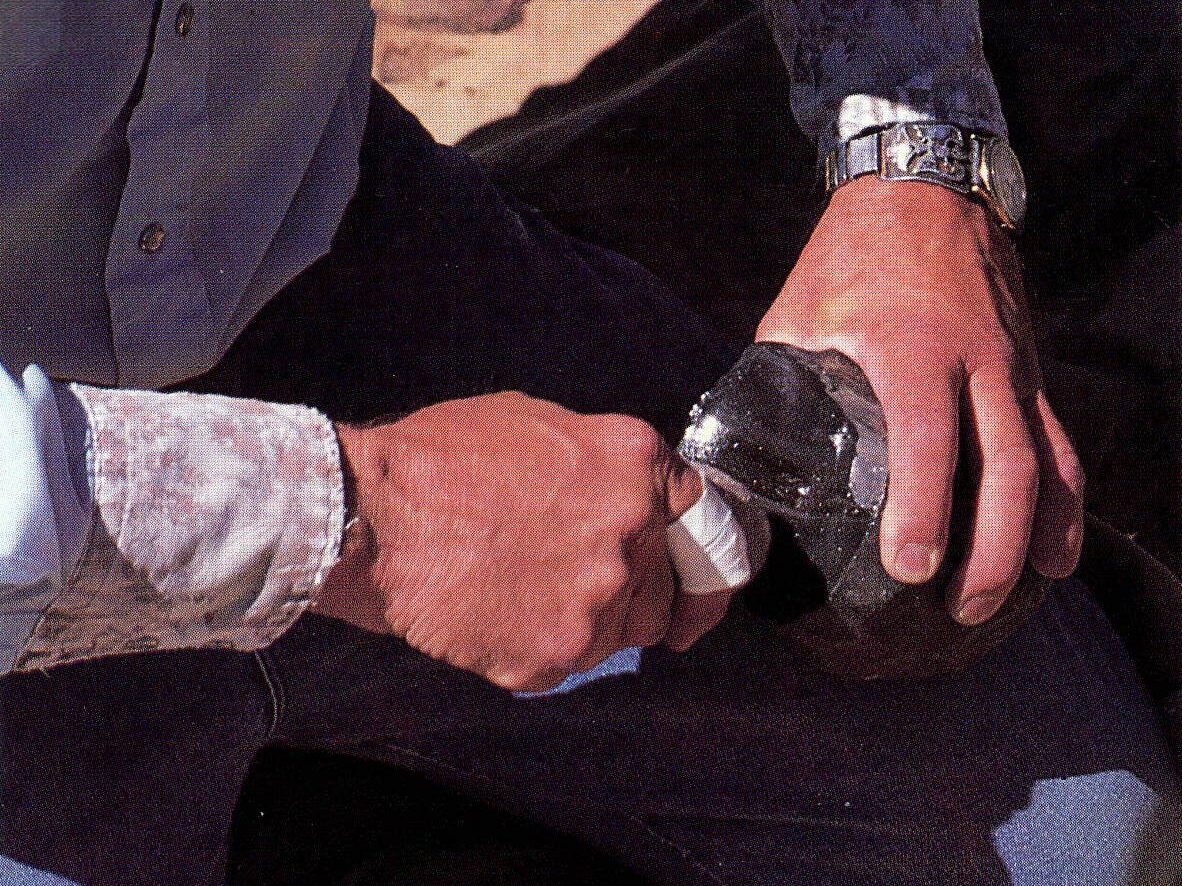
Stone chipping takes its toll on Tom’s hands. The fine slivers of stone chipped off the piece he is working are like slivers of glass and slice his skin. The medical tape he wraps around his thumbs and fingers as a shield seldom prevents them from being cut. Tom sometimes used a leather glove while chipping, but the slivers of stone soon make shreds of even this protection. He speculates that early craftsmen probably held the stone with a piece of leather to deflect some of the tiny stone slivers.
Chipping stone is tedious and time consuming work. One item may take several hours to finish and no matter how careful a craftsman is, a project can be rendered useless if a chip should flake wrong in the final stages before completion.
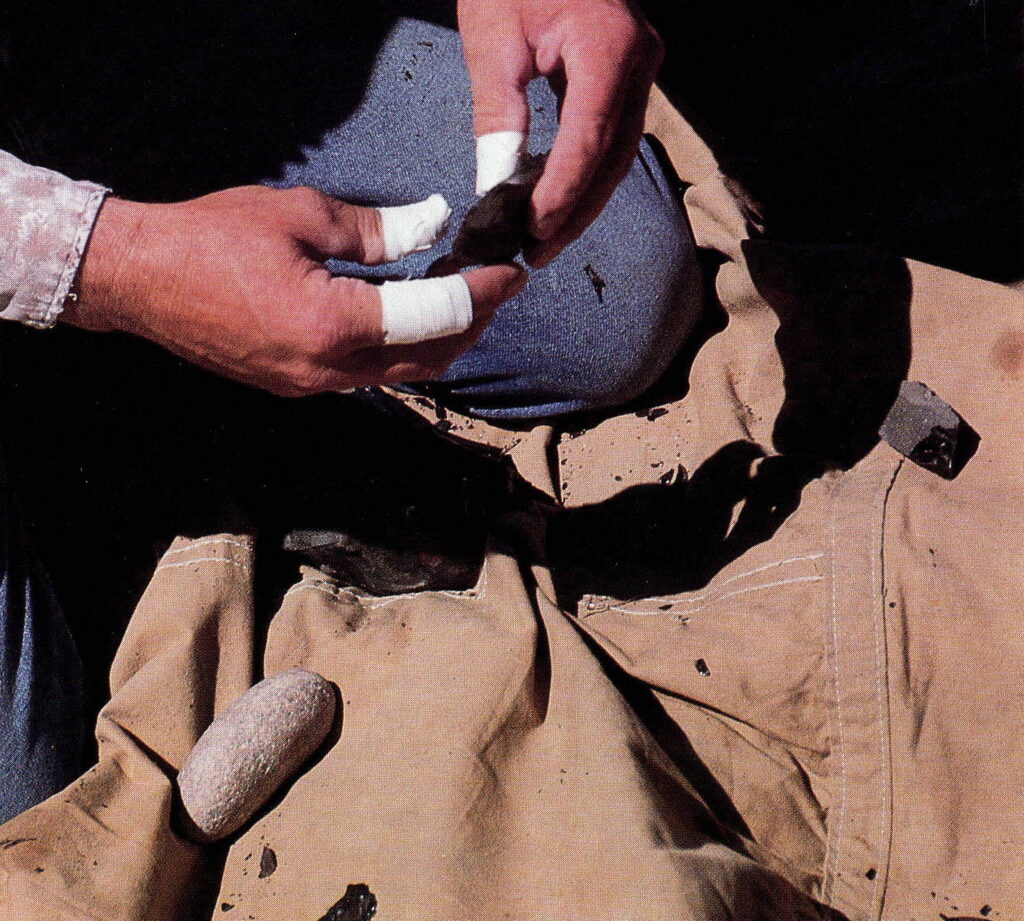
Observing Tom’s masterful hands chip the flakes is like watching part of the past come alive. His skills mirror those of ancient man who might have sat in the same place centuries ago working the same type stone.
The first step is to hold a large piece of obsidian and using a harder stone strike the edge to break off thin slabs of stone. Precise eye/hand coordination is needed for this procedure. Numerous slabs may have to be knocked off before a piece the approximate size and thickness of the desired point is rendered.
A piece of chipped obsidian close to the size needed for this particular project is found. The remaining flakes that were broken off will not go to waste. They will be used in future projects for a variety of different points or blades.
The naturally rounded granite used as a hammer rests near the craftsman’s knee.
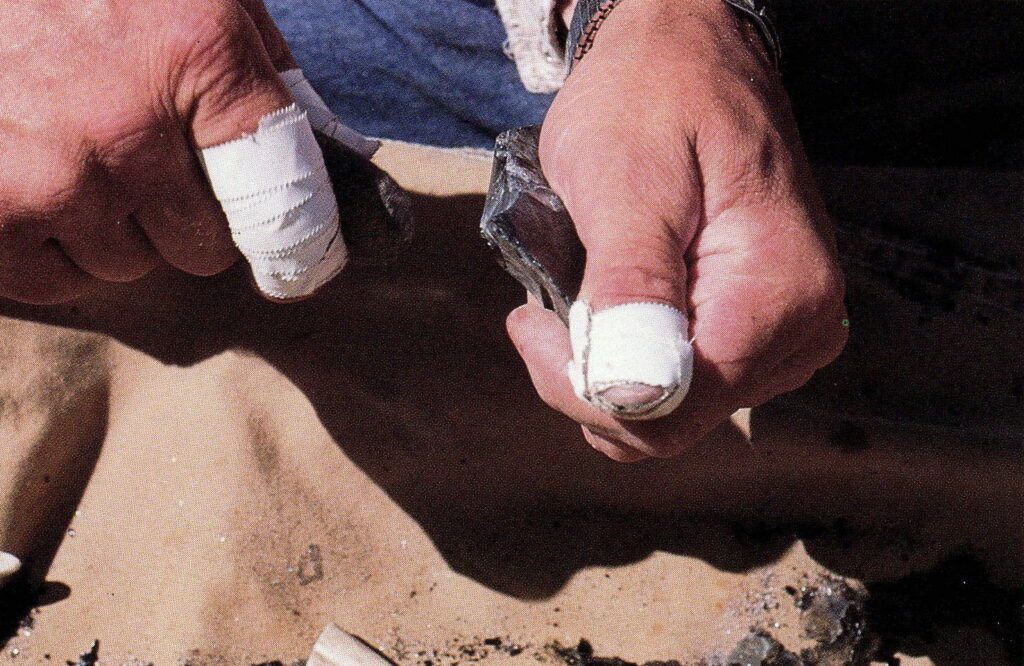
Continuing the percussion method, Tom uses a variety of smaller striking stones to narrow the piece of obsidian he has chosen. Blows are made at exacting points around the piece causing it to flake and become thinner.
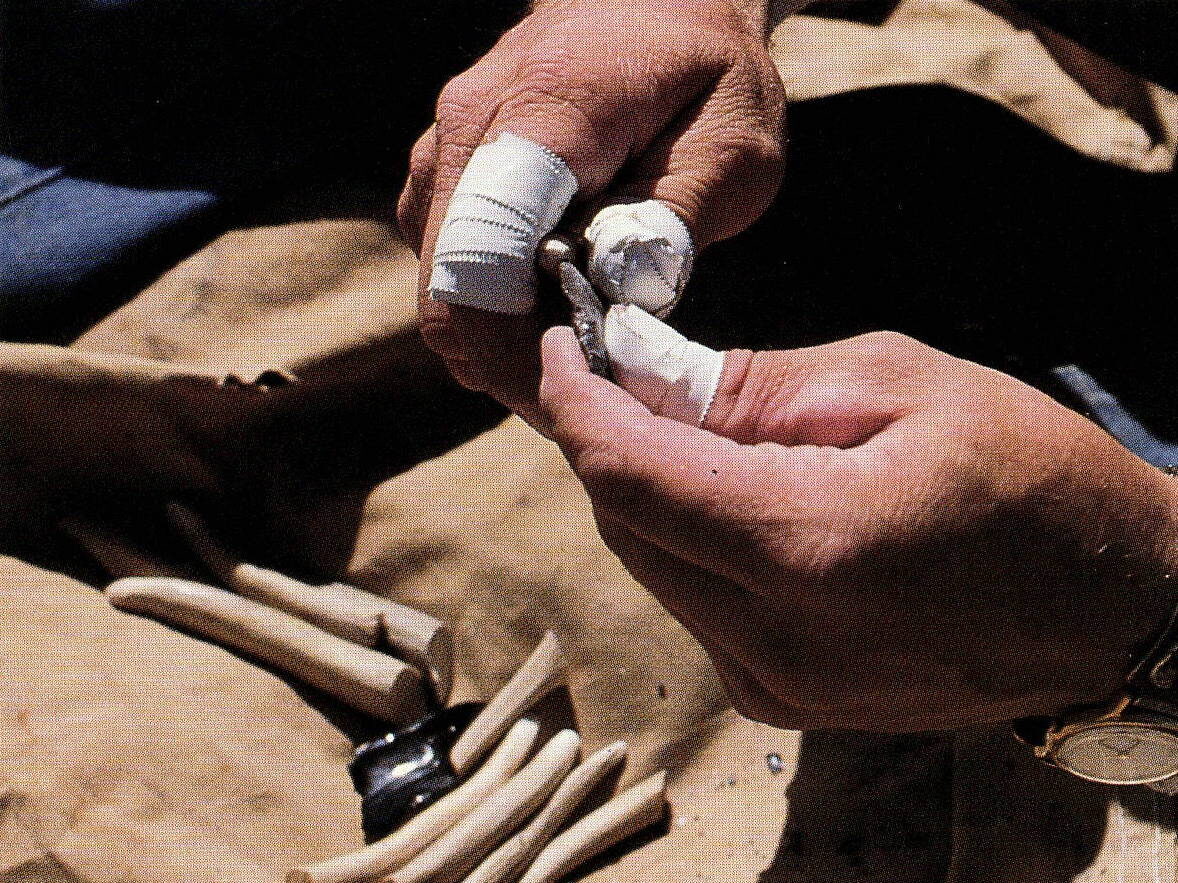
Once the stone has become roughly shaped and is near the desired thickness, Tom changes tools. The various antler tips are used to grab the edges to shape the stone. The process now becomes more precise with a combination of strength and coordination. Always using inward pressure he continually turns the stone working all around the outer edge. The razor sharp edge is taken off so the stone will chip rather than shatter while being worked.
The original piece of obsidian has now been rendered into a razor sharp point of uniform thickness. This procedure took over an hour to complete and a pile of flakes in the form of sharp slivers and chips can be seen.
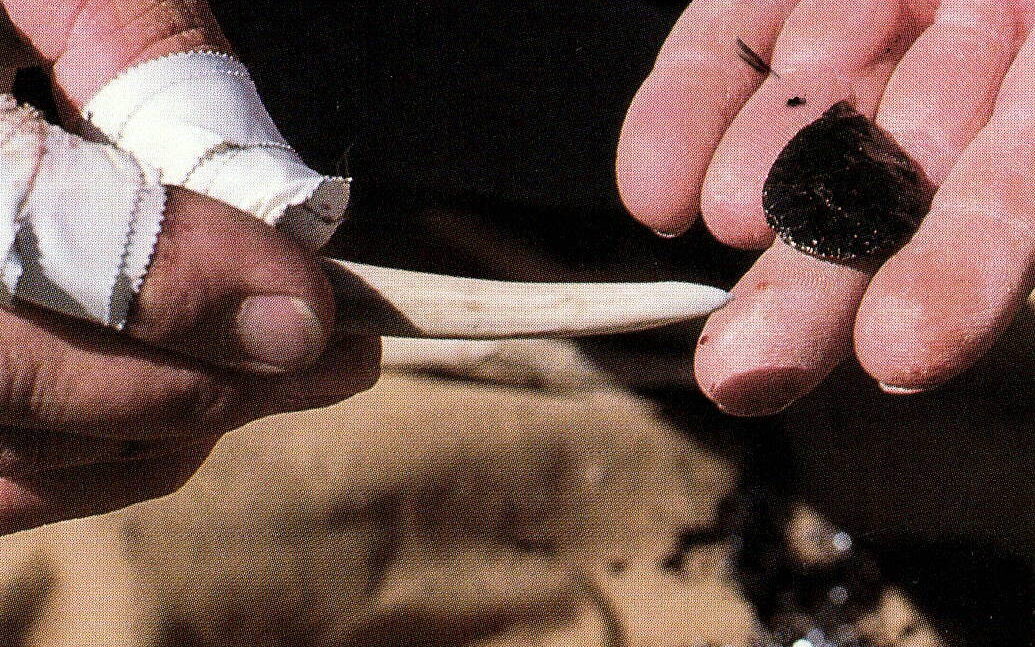
For the final step, an antler tip is sharpened on a slab of sandstone to a finer degree. Early craftsmen used sandstone as a file to sharpen their tools. The keen point of the antler tip is needed in doing the intricate work of notching the point. Notches differ with various points depending on how they are used.
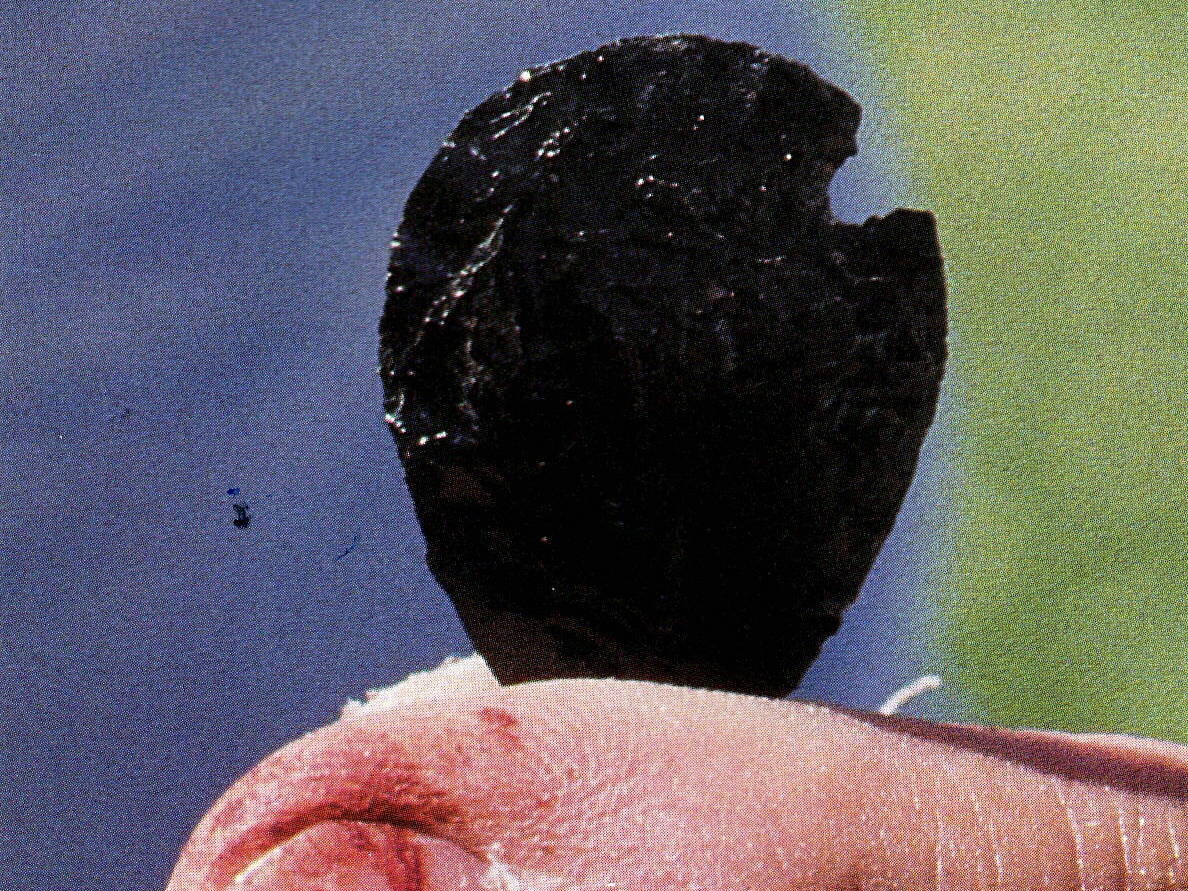
At this stage the first notch has been started. To chip matching notches into both sides without breaking the point is delicate work. The wrong amount of pressure or a slight difference in the angle can destroy the several hours of work that went into the project.
With the last chip taken out a one of a kind item has been made — a real work of art.
To understand and appreciate a finished piece of art from any age or culture one must consider the time, effort, pride and dedication that goes into each piece by the artist. The effort Tom puts into his art and the exactness to detail for authentic materials and design has gained him renowned recognition by the people of the Wind River Reservation.
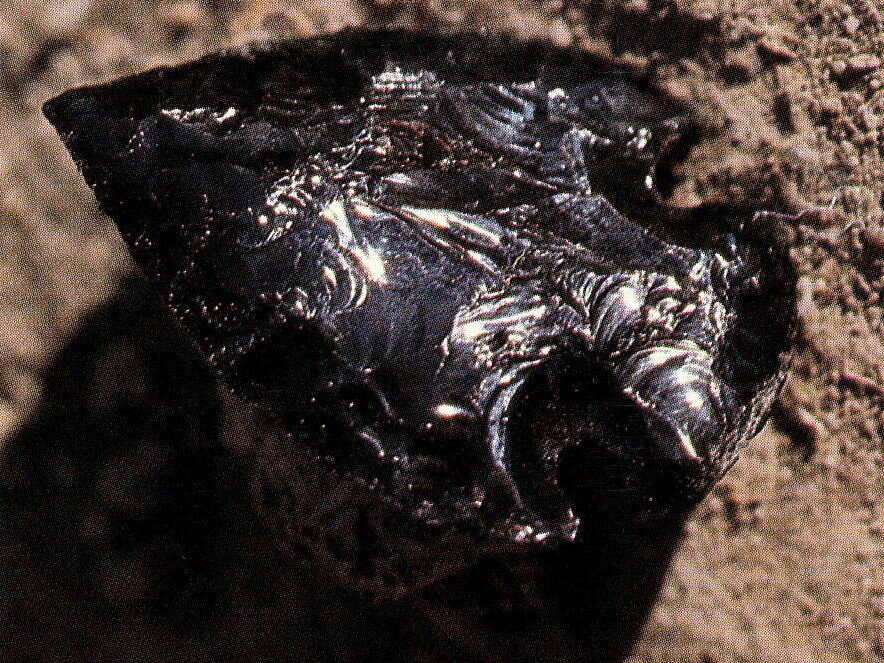
St. Stephens Indian Mission Foundation is a non-profit organization, incorporated under the laws of the State of Wyoming on March 31, 1974, and listed on page 184 of the 1993 OFFICIAL CATHOLIC DIRECTORY. The sole purpose of the foundation is “to extend financial support to St. Stephens Indian Mission and its various religious, charitable and educational programs and other services conducted primarily for the benefit of the Northern Arapaho and Eastern Shoshone Tribes on the Wind River Indian Reservation.”
